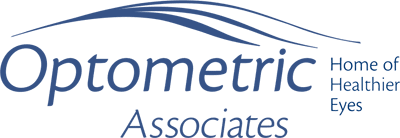Dry eye is a chronic condition in which the body does not produce enough tears, or poor quality tears that don’t sufficiently lubricate the eye. Without proper tear lubrication, our eyes can become very irritated. Common symptoms include:
- Burning or stinging
- Unstable or blurry vision
- Redness
- A “gritty” sensation
- Contact lens intolerance
- Tired, fatigued eyes
- Bouts of excessive watering
Patients with severe cases of dry eyes may actually experience vision impairments caused by damage to the surface of the eye. Fortunately, dry eye treatments are available to help the eye produce more of its own natural tears and also manage inflammation. Unfortunately, our long Maine winters contribute significantly to the symptoms of dry eye disease.
Did you know…
that dry eye is a very common condition among residents over age 50? The American Academy of Ophthalmology reports that nearly 4.9 million Americans over age 50 are suffering from dry eye, with women outnumbering men nearly 2 to 1. There are many reasons why people develop dry eye, including environmental conditions, the use of certain medications, and the long-term use of contact lenses.
Frequently Asked Questions
Should I be treated for dry eye?
The only way of knowing whether you need treatment for dry eye is by visiting your eye doctor for a diagnostic exam. Your eye doctor may recommend treatment if you are found to have abnormal tear production or other factors that are contributing to dryness on the surface of your eyes.
What things can make dry eye disease worse?
- Low humidity environments
- Some oral medicines, such as antihistamines, birth control pills, and some high blood pressure medications
- Extended screen time on computers, phones, and tablets
- Advancing age
- Some glaucoma medicines, and also drops that “get the red out,” such as Visine
- Blepharitis, which is an infection of the eyelids that affects tear production and causes eye irritation
- Some contact lenses and lens solutions
The best way to start improving your dry eye symptoms is to visit our dry eye treatment center. We can perform a complete analysis of your dry eye profile and recommend a targeted strategy to improve your discomfort.
What should I expect during treatment for dry eye?
There are several ways of treating dry eye. Together with your optometrist, you will decide upon the treatment that best fits your needs. At Optometric Associates we are a Dry Eye Treatment Center of Excellence. Our state-of-the-art dry diagnostic testing can help determine what type of dry eye disease you have and effectively target your personal treatment strategy. This may include:
- Supplementing your natural tears with artificial tears
- Prescription medicines designed to increase natural tear production and/or treat the inflamed ocular surface
- Improving natural tear quality with omega-3 supplements, such as Nordic Naturals
- In-office treatments to enhance natural tear production and quality, such as Lipiflow
- At-home treatments, such as a Bruder mask, or lid therapies like Hypochlor and Avenova
- In-office and at-home treatments for blepharitis
- Punctal Plugs, which conserve your natural tears by blocking tear drainage
What is Lipiflow? I’ve never heard of it-
Lipiflow is our most innovative and exciting new dry eye treatment. This has provided significant relief to many of our patients who only experienced very temporary relief from artificial tears, or suffered from significant discomfort from their contact lenses. Lipiflow provides precise thermal pulsation to the meibomian tear glands to enhance tear quality and ocular discomfort. This system is approved by the FDA for treatment of meibomian gland dysfunction and evaporative dry eye. To learn more about Lipiflow, visit dryeyeandmgd.com


